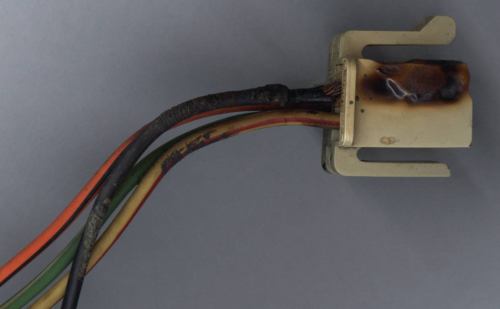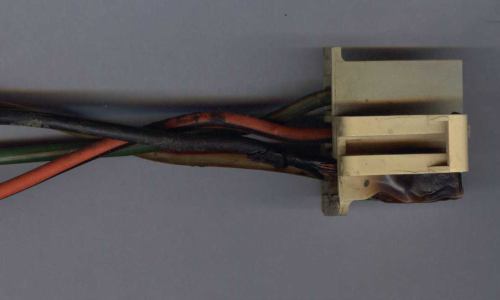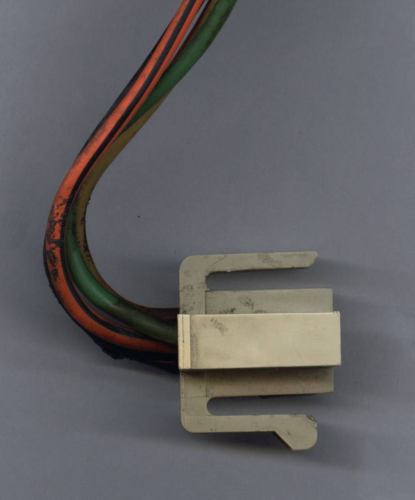To control the speed of the blower motor, the manual climate control system
uses a conventional nichrome resistor to limit current flow. There are three
resistor coils present, but four blower motor speeds. For the high speed,
current flows directly from the switch to the blower motor bypassing the
resistor assembly alltogether.
The cylinderical can with wires attached to it is a thermal protective
device to protect the resistor assembly from getting too hot and damaging
the evaporator housing or causing a fire. Once this device trips, the entire
resistor assembly becomes non-functional and must be replaced. The resistor
is supposed to be cooled by the air flowing from the blower motor, but old
wornout motors typically draw too much current and don't provide the volume
of air that they should to cool the resistor. There are other problems that
can cause insufficent air flow such as corrosion on electrical terminals
and fan blades that are not properly attached to the blower motor shaft.

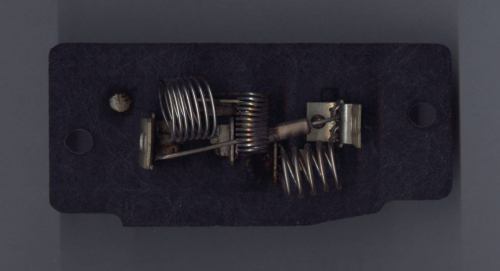
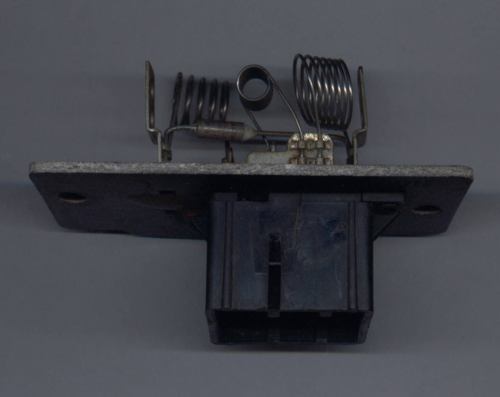
Lately, I had noticed that there was a very large gap in speed between
the "high" speed and the "medium-high" speed. The gap was getting larger
as time progressed too and making the lower speeds effectively useless. In
the pictures below, the melted terminal on the connector is the common ground
one which explains why all the speeds were affected. There are large amounts
of current flowing through the resistor for the blower motor and a little
bit of corrosion can generate a significant amount of heat.
Since my old manual blower resistor didn't work very well, I removed it
and installed it's eatc counterpart in it's place. This left me only with
a blower that worked on "high" until I finally installed the eatc control
head and wiring though.
